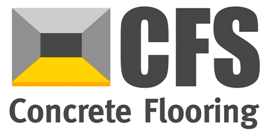Polished Concrete: Understanding the Benefits
Why Polished Concrete?
There are several benefits of choosing polished concrete for your commercial or residential property. However, the main benefits of polished concrete flooring is it’s lifespan, aesthetics and it’s minimal maintenance care. We’ve outlined a few key benefits of choosing polished concrete for your property.
It’s an Investment
It’s also a worthwhile investment. Typical concrete flooring costs very between £70 – £150 per m2 and with that, you’re getting a floor that will not only maintain its shine and appearance, but will also stand the test of time.
It saves on energy bills
It’s also a strong candidate for saving on energy bills; in that it holds onto heat obtained from solar gain (natural warmth through windows etc) and is able to recycle and cool rooms when it gets too hot.
It’s the best flooring for underfloor heating
Polished concrete is one of the best flooring options if you’re looking to install underfloor heating. The main reason is because concrete has a very high thermal mass, meaning it’s good at storing and distributing heat throughout the property.
Offers an entirely unique finish
Polished concrete separates itself from other finishes because of it’s sheen, elegant finish. Each polished finish will look different depending on the characteristics of the present concrete slab.
Also, the mixing and installation process will also dictate the final aesthetic outcome (because of the different sands and aggregates used). No polished concrete finish is ever the same, making your floor design one of a kind.
It’s a safe flooring alternative
One of the biggest misconceptions of polished concrete flooring is that it’s slippery. While it’s design and name may suggest it’s prone to slipping, polished concrete actually offers plenty of friction under foot. This is something to consider if you’re concerned about slip hazards for your children and/or pets.
Also, polished concrete is arguably the most cost-effective flooring on the market.
Extremely low maintenance
Concrete is generally known for its durability and lifespan, and polished concrete is no different. While it doesn’t follow the same creation process as other concrete forms, it’s just (if not more) durable. Also, it’s very simple to clean and maintain because of this. Polished concrete will only require sweeping, mopping and if you want to keep it glossy, use a microfiber pad to clean and remove dirt particles.
Variety of finish options
There are three main types of polished concrete finishes:
Topical polished concrete – this is where a liquid-applied coating is placed on the floor’s surface to achieve a sheen, glossy finishes.
Burnishes polished concrete – this technique uses abrasive pads to create friction on the concrete floor surface until the required level of gloss is achieved.
Bonded abrasive concrete – abrasives are the most important tool for mechanically processing concrete to a polished finish. The process itself uses bonded abrasives to achieve the desired aggregate exposure and gloss finish.
Installing a Polished Concrete Floor
Polished concrete flooring is renowned for being able to create a seamless link between interior and exterior (eg: kitchen to garden, or conservatory to garden). They are also commonly laid in high traffic areas, such as restaurants, shopping centres and universities thanks to their durability and maintainability.
Polished concrete follows the same creation process as other concretes; it’s made by combining cement, gravel, sand and water. This mixture is then poured onto a reinforced mesh (usually steel and fibre), which provides a strong foundation for the mixture and minimises the likelihood of cracking and splitting.
If you are considering installing underfloor heating alongside your polished concrete floor, the concrete must be laid on top of the pipes.
First, you need to select your finish. Once this is done, a dry shaker is applied to the concrete’s surface (this helps harden the concrete and fill in the pores).
This is then smoothed using a power float, which is essentially a large round disc that smooths over concrete, giving it a levelled finish. This can be repeated several times before the right level of levelling or aesthetics is achieved.
Before you use a power float, ensure that the concrete is strong enough to uphold the weight of the power float, but not dry enough that the float has trouble trimming high spots or fill the lows.
In most cases, polished concrete floors are cast (laid) in one section or area. They are then covered (so no dust or debris can enter) and left to cure for approximately one month.
The cover is then removed and the floor is primed for cleaning, mopping and burnishing to smooth and remove any footprints or superficial marks. This is when you will be able to add a gloss, matt or satin finish (if you desire).
The finishing touches of your polished concrete floor are completed using a diamond grinding machine (this evens out the surface). A chemical densifier is then applied to give it more shine.
Considering Installing a Polished Concrete Floor?
There are several benefits that come with polished concrete flooring. If laid correctly by an experienced company, polished floors can last a lifetime and offer an exceptional return on investment.
Installing polished concrete floors is very labour-intensive and should only be carried out by experience professionals. If you’re considering installing polished concrete flooring in your property, our team are here to help.
We have over 40 years’ experience in the construction industry and are Construction Line Gold Members. Please feel free to call us today if you require any information on our concrete flooring services.
